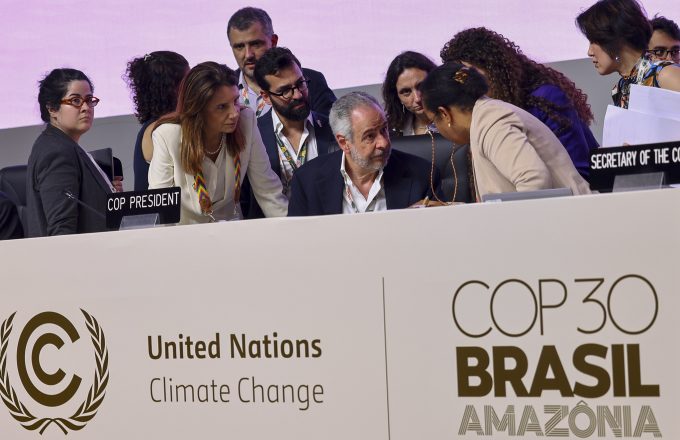
The Underlying Market Risks of Politicized Finance
Professor Maurice Tse and Mr Clive Ho
17 September 2025
Launched by World Liberty Financial, a decentralized financial (DeFi) protocol and governance platform backed by Donald Trump’s family, the digital token WLFI began trading on major cryptocurrency exchanges on 1 September 2025 (see Figure).
After the digital token was made publicly tradable, the Trump family’s wealth once surged by as much as US$5 billion. Since returning to the White House, Trump has not only reaped handsome financial rewards from WLFI, but has also become the wealthiest US president to date.
However, in an interview back in June 2021, Trump openly criticized cryptocurrency as a scam that compromised the value of the US dollar and advocated for strict regulation. Three years later, in an attempt to win the presidential election, he did an about-face on this issue and promised to make America the “crypto capital of the world”. After assuming the presidency, Trump issued an executive order aimed at strengthening American leadership in digital financial technology and establishing the President’s Working Group on Digital Asset Markets to ensure that the nation leads the blockchain revolution. American Bitcoin, a bitcoin mining company in which his two sons are investors, was listed on Nasdaq last week, providing the market with another indicator of the Trump family’s active involvement in cryptocurrency investment.
In fact, it was only at the end of 2022 that Trump began selling digital collectibles, including images of himself in superhero outfits or posing in golf attire. Open data reveals that the Trump family, through engagement in non-Fungible Tokens (NFT), Bitcoin, and the issuance of their own cryptocurrencies, has generated an on-paper profit close to US$1 billion.
Since its inception in September 2024, World Liberty Financial has been buying cryptocurrencies such as Ethereum and Tron, but has not yet issued any decentralized financial services, as per its claim. After releasing its second batch of cryptocurrencies in March 2025, the company reached a capitalization of US$550 million and announced the launch of USD1, a US dollar-pegged stablecoin that will initially go live on the Ethereum and Binance Smart Chain networks.
As for the WLFI token, launched last week with the support of the Trump family, its emphasis is on the “America First” policy, combined with the practical functions of blockchain technology. Despite an increase of over 60% in transaction price within 48 hours of its release, following the announcement of the burning of 47 million tokens, even the large wallets of some well-known investors were frozen. The WLFI crashed soon after launch, plummeting by 40% overnight and drawing widespread attention in the market.
According to market news, the investment cost of WLFI tokens at an earlier stage was extremely low, with only 20% of holdings allowed to be sold. Nevertheless, once the company was rumoured to be helping major holders liquidate their assets and the rules were changed to permit the dumping of tokens, sellers started to flood the market. Such flip-flopping seriously undermined investors’ trust and exposed fundamental flaws in the project’s management. The extensive financial ecosystem initially touted by the WLFI cryptocurrency turned out to be an empty promise. While a total of 100 billion WLFI tokens were issued and the market capitalization was at one point driven by speculation to US$40 billion, both token unlocks and the unlock schedule remain completely opaque. The project team and early investors can dump the tokens at any time, leaving ordinary investors, who are at an information disadvantage, to be harvested.
What is even more worrying is that all income from WLFI goes to the company alone, while token holders receive no dividends or gains at all. Contrary to the principles of decentralization, this practice amounts to pure market speculation rather than genuine value creation. Given WLFI’s negative image, some investors on social media and cryptocurrency forums have begun comparing it to FTX or even Bitconnect. Despite the fact that WLFI’s liquidity remains ample, the sudden shift in market sentiment reflects the palpable distrust among investors.
The crash of WLFI can be attributed primarily to four factors. First, its unlocking mechanism is flawed. According to WLFI’s schedule, on 1 September, only about 20% of early-seed and private-sale tokens would be unlocked through the Lockbox system, while the release of the remaining tokens would be subject to a vote by trustees. However, the Trump family, as the project team, is exempt from this rule, allowing them unrestricted access to the funds. Second, WLFI is caught in a valuation bubble. Its fully diluted valuation stands at a staggering US$55 billion―equal to the combined fully diluted valuation of four major tokens, including LINK and UNI. Yet there is virtually zero support from actual transactions, as the valuation is mainly backed by the Trump family, with fundamental performance metrics utterly absent. Third, token ownership is highly concentrated, with 35% held by the project team and strategic investors. Historical patterns indicate that Trump-related projects are often dumped by insiders following considerable price surges, typically resulting in price crashes. Fourth, to strengthen regulation of political tokens, the US Securities and Exchange Commission may require WLFI to delist if it is determined to constitute an unregistered security.
It is noteworthy that the son of Steve Witkoff, US Special Envoy to the Middle East under the Trump administration, co-founded World Liberty Financial and is facing questions due to a potential conflict of interest. Just days before Trump assumed the presidency in January 2025, his wife Melania Trump launched her own meme coin, reaping a profit of over US$11.4 million for Trump-related entities shortly before the coin’s value recorded a sharp plunge.
It is not surprising that experts and industry insiders have recently cautioned against the Trump family’s involvement in cryptocurrency, warning it would not only lead to conflicts of interest or even national security risks, but also give rise to money politics. As pointed out by Norman Eisen, Special Counsel for Ethics and Government Reform under President Barack Obama, the Trump family’s actions present a serious conflict of interest with Trump’s presidential duties.
In light of the eventual failure of previous ventures like $Trump and NFT projects, the prospect of the WLFI token is viewed unfavourably. The simultaneous rise of WLFI, RTX, and SOMI highlights the fragmented mindset of cryptocurrency investors today. WLFI thrives on the political power of the ruling family. RTX delivers practical solutions built on enterprise-grade logic. SOMI distinguishes itself through transaction speed and broad vision, though its practicality remains to be seen. Together, these three tokens embody the speculative, controversial, and prudent approaches that currently coexist in the marketplace.
By blending his “Make America Great Again” slogan with blockchain technology, the Trump family is seeking to create a symbolic financial product in the crypto arena. This strategy demonstrates that cryptocurrency is no longer merely a product of technological innovation, but has instead become a brand-extension and capital-operation tool for political figures and celebrities. In the Hong Kong and Asian markets, such a trend of “politicized finance” should not be ignored. Against the backdrop of blockchain technology incessantly permeating mainstream financial systems, striking the right balance between technological innovation and ethics regulation is likely to be a prime focus for policymakers and investors.
With the close interconnectedness of the world’s financial markets, the sharp price fluctuations and governance controversies surrounding WLFI have raised red flags for investors in Hong Kong and elsewhere. A sudden shift in market sentiment (see Figure) serves as a case in point. In the cryptocurrency market, a project’s governance structure, token unlocking mechanism, and information transparency are, more often than not, more determinant than short-term price movements. As retail and institutional participation in crypto investment grows in Hong Kong, a leading international financial centre, the authorities should strengthen their analytical capabilities in assessing project white papers, token allocation plans, and governance mechanisms. In a market characterized by high volatility and information asymmetry, investors lacking an understanding of a project’s inner workings are inevitably exposed to substantial risks.
WLFI token price trend

Source: CoinGecko







